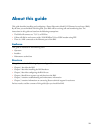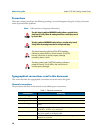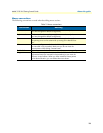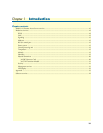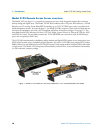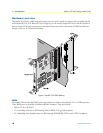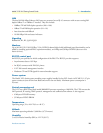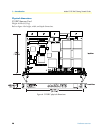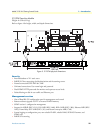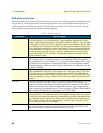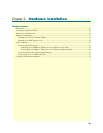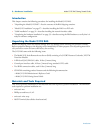
Hardware overview 19
Model 3125 RAS Getting Started Guide 1 • Introduction
LAN
The dual 10/100-Mbps Ethernet LAN ports are presented on an RJ-45 connector with an auto-sensing/full-
duplex 10Base-T or 100Base-T interface. They also include:
• 100Base-TX half-/full-duplex operation (100 + 100)
• 10Base-T half-/full-duplex operation (10 + 10)
• Auto detection and fallback
• 10/100 Mbps link and status indicators
Signaling
Robbed-bit, R1, R2, Q.921/Q.931
Modems
Up to 96/120 V.92, V.90, K56Flex, V.34+, ISDN B-channel digital calls (additional ports/functionality can be
added by installing optional PMC expansion modules), or 64 kbps and 56 kbps DOVBS (data over voice
bearer services).
RS-232 control port
An RS-232 port provides for initial configuration of the RAS. The RS-232 port also supports:
• Asynchronous data at 19.2 kbps
• An RJ-45 connector with EIA-561 pinout
• A VT-100 console management interface
• Hardware CD and DTR signals for external modem support
Power system
The Model 3125 obtains power modular power supplies installed in the cPCI chassis via PCMG 2.11 47-pin
power connectors (one for the front blade and one for the rear blade). Maximum power consumption is
43 watts.
Central processing unit
The 3125 uses a RISC-based Intel model i80960VH processor operating at 100 MHz. The CPU executes the
LAN protocol, IP routing, WAN protocol, management and authentication software. It also supports:
• 4 Mbytes of FLASH memory
• 32 Mbytes of EDO DRAM
Temperature
Operating range: 32 to 104 °F (0 to +40 °C)
Altitude
Maximum operating altitude: 15,000 feet (4,752 meters)
Humidity
5 to 95% relative humidity (RH) at 122 °F (50 °C)



